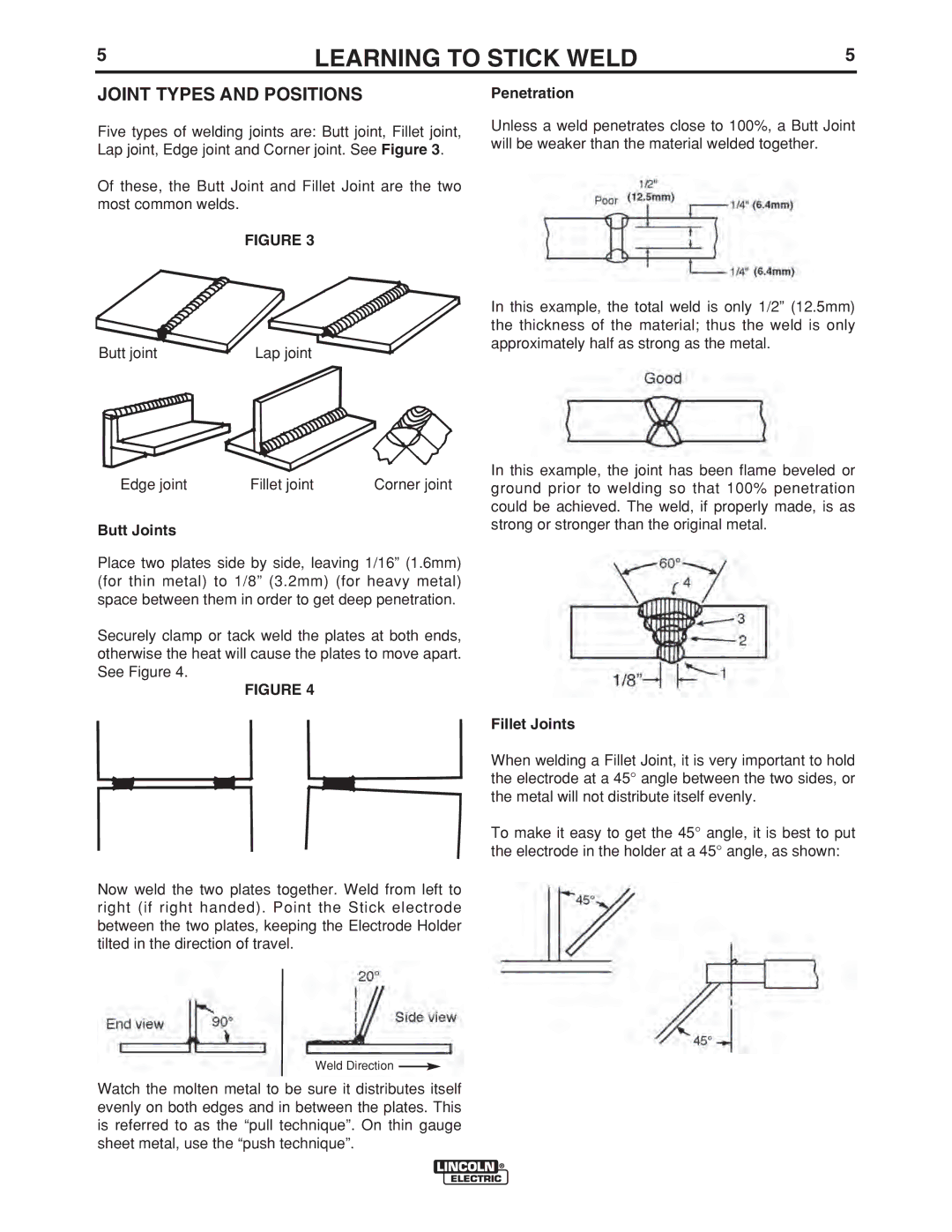
5 | LEARNING TO STICK WELD | 5 |
JOINT TYPES AND POSITIONS
Five types of welding joints are: Butt joint, Fillet joint, Lap joint, Edge joint and Corner joint. See Figure 3.
Of these, the Butt Joint and Fillet Joint are the two most common welds.
FIGURE 3
Penetration
Unless a weld penetrates close to 100%, a Butt Joint will be weaker than the material welded together.
| In this example, the total weld is only 1/2” (12.5mm) |
| the thickness of the material; thus the weld is only |
Butt joint | approximately half as strong as the metal. |
Lap joint |
Edge joint | Fillet joint | Corner joint |
Butt Joints
Place two plates side by side, leaving 1/16” (1.6mm) (for thin metal) to 1/8” (3.2mm) (for heavy metal) space between them in order to get deep penetration.
Securely clamp or tack weld the plates at both ends, otherwise the heat will cause the plates to move apart. See Figure 4.
FIGURE 4
Now weld the two plates together. Weld from left to right (if right handed). Point the Stick electrode between the two plates, keeping the Electrode Holder tilted in the direction of travel.
In this example, the joint has been flame beveled or ground prior to welding so that 100% penetration could be achieved. The weld, if properly made, is as strong or stronger than the original metal.
Fillet Joints
When welding a Fillet Joint, it is very important to hold the electrode at a 45° angle between the two sides, or the metal will not distribute itself evenly.
To make it easy to get the 45° angle, it is best to put the electrode in the holder at a 45° angle, as shown:
Weld Direction
Watch the molten metal to be sure it distributes itself evenly on both edges and in between the plates. This is referred to as the “pull technique”. On thin gauge sheet metal, use the “push technique”.
